How to Plan an Independent Trip to Cuba (6 Simple Steps)

As the door to travel to this lovely island in Latin America is now open to many Americans, I often hear get a lot of questions regarding how to plan an independent trip to Cuba. This is also known as travel under the “Support for the Cuban People” OFAC category.
In this post I’ll go over the basics for traveling to Cuba, such as travel document requirements (e.g., Visas), selecting the time of year to visit, finding a flight, selecting a place to stay, and general tips on what to expect when you’re there.
So if you’ve ever thought about heading to Cuba, this article is for you. While this article will be geared to those readers who are traveling from the U.S., it will include content relevant to any traveler to this country as well.
Note: This post is up-to-date for 2023, and includes the most recent travel regulations imposed by the US government.
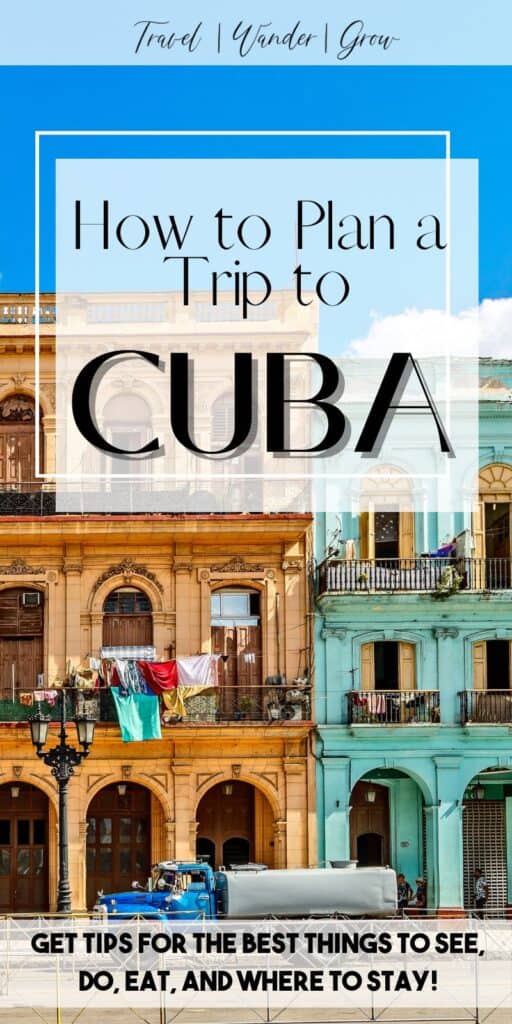
1 | Plan an Independent Trip to Cuba | Decide When to Visit
Peak Season
High season for traveling to Cuba is from October through April. During this time you’ll experience the most pleasant weather, with less humidity and little rain as this is the dry season. This is also the time when you’ll experience the most tourists, as they’ll be looking for the pleasant weather as well.
Off-Peak
The rainy season falls from May through September, but this does not mean that you’ll experience monsoon-type rain. I visited for a week in May, and we only experienced rain on one day, and it only lasted for about an hour. My personal preference is to visit during the end / beginning of the off-peak season. This allows you to avoid being there with many other tourists, but still miss the heavier rain periods.
Plan Cuba Like a pro!
Sign up below and get our Free Guide to planning the Perfect Trip to Cuba!
Cuba is a complex place to plan travel for – to help with this, we’ve created this guide to make sure you don’t forget anything before you go!
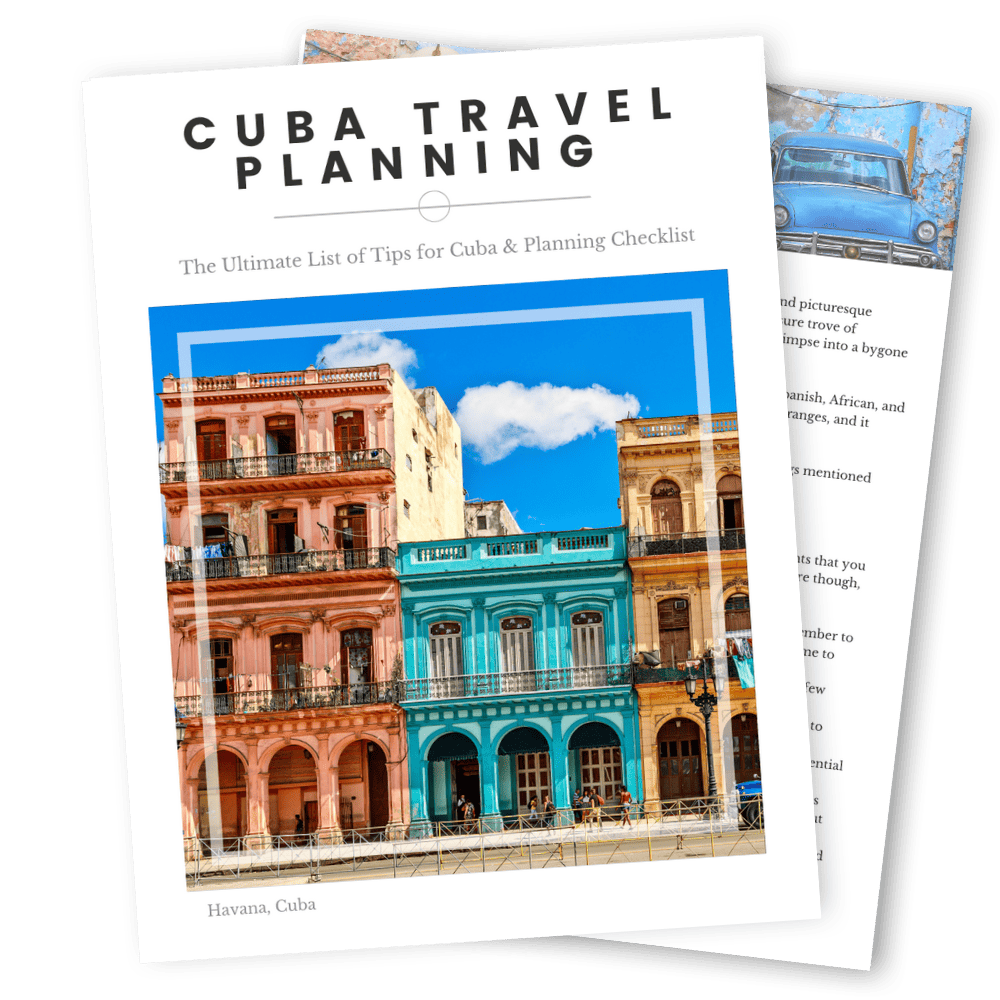
RELATED: Where to Eat in Havana | A Guide to Great Food!
2 | Identify Your Reason for Travel to Cuba
The 12 Categories of Authorized Travel to Cuba
As an American traveling to Cuba, it is still technically illegal to travel to the country as a tourist. Given this fact, you will need a special license in order to get into the country. There are currently 12 categories of authorized travel to Cuba from the United States that come from the Office of Foreign Assests Control (OFAC):
- Visiting Family: Visiting close relatives who are nationals of Cuba.
- Official business of the U.S. government, foreign governments, and certain intergovernmental organizations.
- Journalistic Activities: Engaging in journalistic work for professional reporting.
- Professional Research: Conducting research or attending professional meetings related to one’s profession.
- Educational Activities: Participating in educational programs or conducting academic research.
- Religious Activities: Engaging in religious activities and attending religious services in Cuba.
- Support for the Cuban People: Engaging in activities that support the Cuban people, such as interacting with locals, supporting private businesses, and participating in community projects.
- Humanitarian Projects: Undertaking projects that benefit the Cuban people and contribute to their well-being.
- Public performances, clinics, workshops, athletic or other competitions and exhibitions
- Activities of private foundations, research or educational institutes
- Exportation, importation, or transmission of information or information materials: Sending information or materials to Cuba that promote communication and free flow of information.
- Certain export transactions that may be considered for authorization under existing regulations and guidelines.
You are able to self-qualify for any of the 12 travel categories listed here, so give some thought to the one that applies best to the purpose of your travel.
Assuming that you are not traveling to visit family or conduct business, you are likely going to place your travel under the “Support for the Cuban People” option. (You can find more information on current state travel restrictions on the US Embassy in Cuba website.)
For independent travel to Cuba, you have two primary options:
- Support for the Cuban People: This category still permits independent travel, you just have to follow the guidelines that have been set.
- Visiting Family: This self-explanatory category will only apply to those who have family members to visit in Cuba
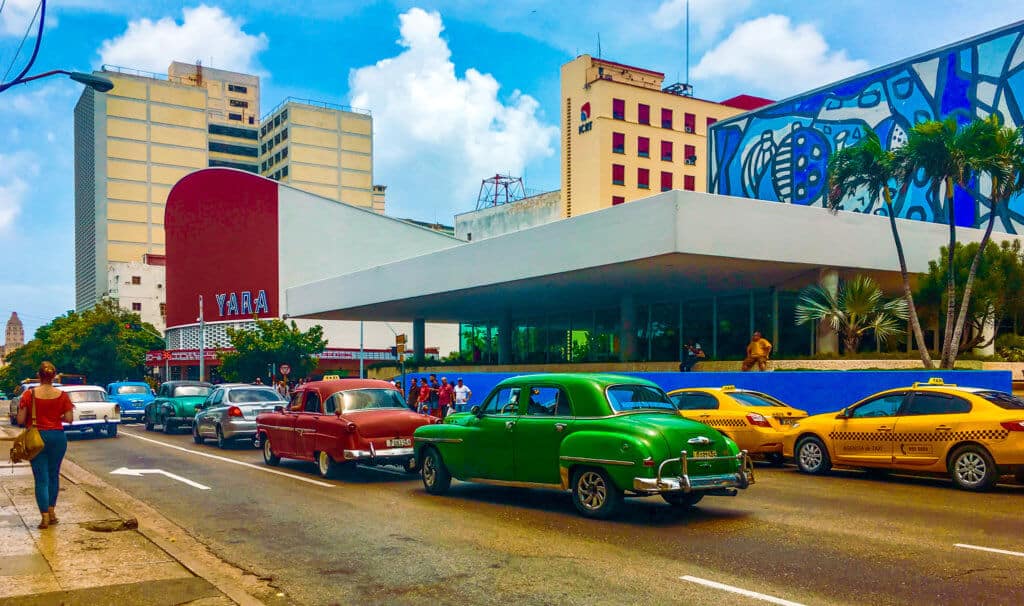
Guidelines for Travel Under Support for the Cuban People
As made clear in the title, your activities should help strengthen society in Cuba. This includes activities such as:
- Supporting independently run markets, museums, and other types of businesses
- Getting to know the people that you encounter on the street / discussing local society with them
- Taking Spanish language, music, or dancing classes
You must all avoid GAESA-owned (military-owned businesses). See a list of all the organizations that you can not interact with here.
Additionally, it’s a good idea to keep track of all your receipts while you travel. It’s an even better idea to have an itinerary put together that you can pull up in the event that you are questioned on your trip.
Note, it is unlikely that you’ll get any questions, but it’s always great to be prepared!
3 | Prepare to Travel to Cuba
Get Your Cuba Tourist Card (Visa)
All travelers to Cuba are required to obtain a visa before entry, and there are three ways that you may do this:
- Cuban Consulate or Embassy: You could obtain the Cuban Tourist Card directly from the Cuban consulate or embassy in your country of residence. This option is available in many countries where Cuba maintains diplomatic representation.
- Airlines: Purchase the visa at the gate in the airport before the last leg of your flight to Cuba.* The cost of the visa will vary by the airline that you take, but you can expect to spend $50 for the visa plus a processing fee, which is about $25 – $35. This is probably the easiest method, and the option that I selected for my flight to Cuba.
- Authorized Travel Agencies: Purchase the visa from a travel agency that is focused on travel in Cuba or dedicated websites such as cubavisaservices.com.
*Note that the exact cost and method of receiving the information does vary by airline. Remember to check with your airline on the appropriate procedures as soon as you book your flight!
The availability and procedures for obtaining the Cuban Tourist Card might vary depending on your country of residence and the specific travel regulations in place at the time of your inquiry. Also, due to potential changes in regulations or travel policies, it is crucial to check with the Cuban consulate or embassy or your travel provider for the most up-to-date information on purchasing the Cuban Tourist Card.
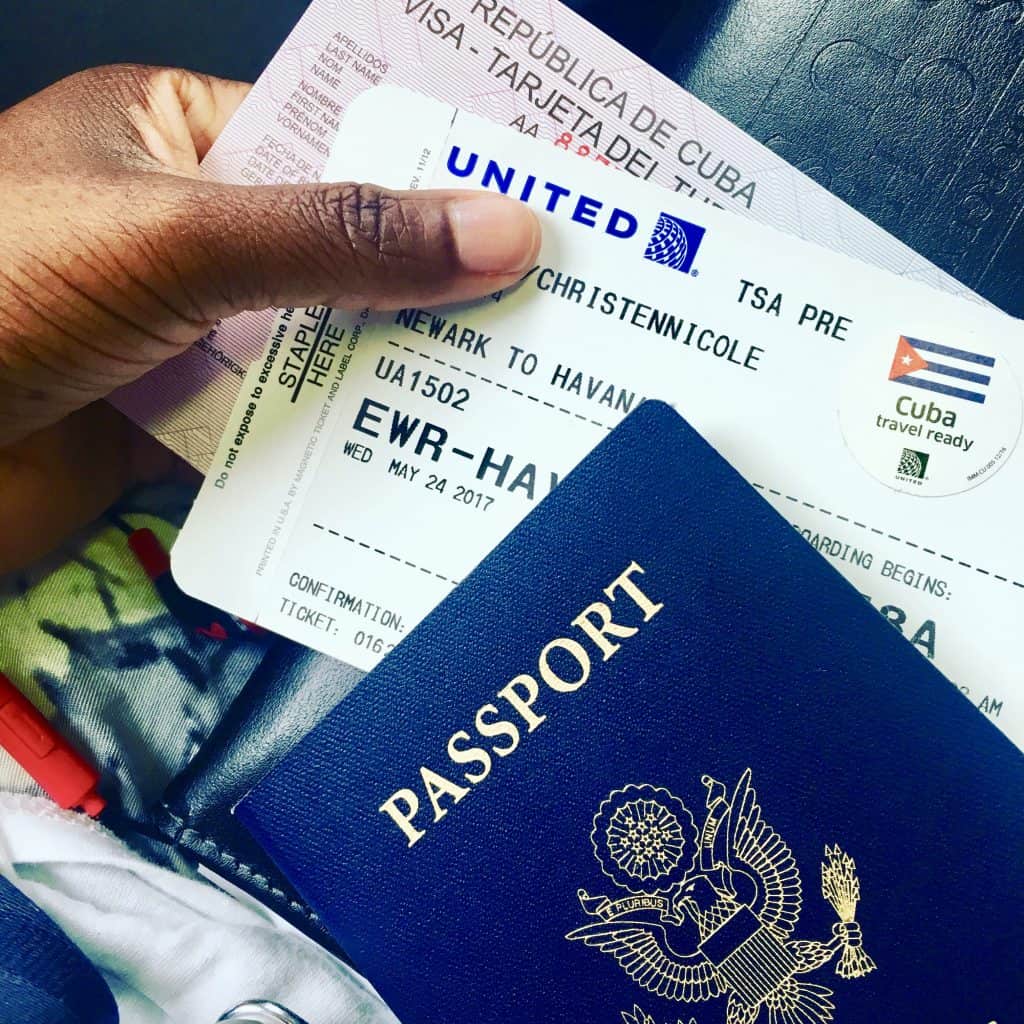
Book Your Flights
You can now book direct flights from many major cities in the US, such as NYC, Miami, Atlanta, Charlotte, and Tampa. Additionally, most major airline carriers fly into Havana, including:
- JetBlue
- American Airlines
- SouthWest
- Alaska Airlines
- United Airlines
- and more!
To find cheap flights, check sites such as google flights, skyscanner and momundo to compare prices and get the best deal.
Plan Additional Transportation
Now, I would typically say “book” here, but with Cuba it is a little challenging to book internal transportation in advance (unless you are booking a flight).
Think through all the cities you plan to visit in Cuba and determine if it’s best to travel by bus, train, taxi, or air, and research on the best way to book it. I like using the website Rome2Rio to figure out how to travel to the next destination. If you are planning to travel from Havana to Varadero, I already have a guide for you, so check it out!
4 | Determine Where to Stay
You have several options for stay in Cuba. When traveling most think of staying in a hotel in order to get the most amenities, but I highly recommend staying in one of the many casas particulares while there. Cuban Casas Particulares are private homes or bed-and-breakfast accommodations offered by local families in Cuba. They provide an alternative to traditional hotels and are known for offering a more authentic and intimate experience of Cuban life.
Visitors can rent a room or an entire house, and the experience often includes home-cooked meals and the opportunity to interact with local families. Casas Particulares are regulated by the Cuban government, and they have become a popular choice for tourists seeking a more personalized and budget-friendly travel experience in the country
Also, due to new restrictions posed on travel to Cuba by the current administration, there are now many restrictions for hotels that Americans may stay in. You can find the complete listing here.


The benefits of staying at a Casa Particular is that you get some insight into what daily life in Cuba is like. When I visited Cuba last May with my friends, we stayed in this Casa Particular in Central Havana and were very well taken care of. We had the option to get breakfast every morning and were also able to coordinate in-room massages and excursions with the owner of the house. We left feeling like we were part of the family!
You can book you casa via Airbnb, or by using one of the many other sites that are available. We reserved ours from CubaBookingRoom.com, and here are a few additional options below:
The benefit of booking via Airbnb is that you can pay in advance. I will note that they typically are a bit more expensive, on average, than some of the other listed sites. But if you are interested in a private space, rather than a shared house, you are more likely to find those in Airbnb. It’s all a matter of preference.
RELATED: The Top 10 Things to Do in Havana
5 | Build Your Itinerary
As I mentioned in Step 2, it’s a great idea to have an itinerary put together in case you get any questions on your trip when you return. It’s also a great idea to have a plan for your trip, as internet is still limited in Cuba so any planning will be mostly done by word of mouth once you arrive. My Cuba itinerary will provides a detailed look on how to spend a week in Cuba.
There are so many unique experiences that you can have while in Cuba. During my visit to Cuba, we spent time learning how to salsa, touring Havana, and visiting the beach. We leveraged the Havana Tour Company site and Cuba-Excursions.com to find and book our activities. To start to build your itinerary, here are a few experiences I highly recommend you consider for your trip:
- Havana: I recommend spending a few days in Havana, the capital of Cuba. This city is renowned for its rich cultural heritage and vibrant street life. The historic Old Havana district offers Spanish colonial architecture and is a UNESCO World Heritage site, providing a glimpse into the country’s storied past. Tourists can explore local attractions like the Malecón promenade, iconic museums, and classic car tours. From authentic Cuban cuisine to lively music and dance venues, Havana presents a diverse and engaging experience for travelers.
- Las Terrazas: This area is a small community and nature reserve in the Sierra del Rosario mountains in Cuba. Established as a UNESCO Biosphere Reserve, it’s renowned for its lush landscapes, abundant birdlife, and sustainable development practices. Visitors to Las Terrazas can explore the beautiful terraced gardens, hike trails through tropical forests, visit the local art studios, and enjoy the serene lakes and waterfalls. The area serves as both an ecotourism destination and a model of environmentally responsible living, making it a unique and refreshing experience for travelers.
- Varadero: I still consider the white sand beaches in Varadero some of the best that I have ever seen. This area has several all inclusive resorts and private houses as well, many right on the beach. If you are looking for a good time and some peace and tranquility, this should be at the top of your list.
For some additional inspiration, check out my post on the Top 10 Things to Do in Havana. Also, reach out to family / friends who have visited Cuba before for some recommendations. We crowdsourced for our trip, and got some awesome tips because of it!
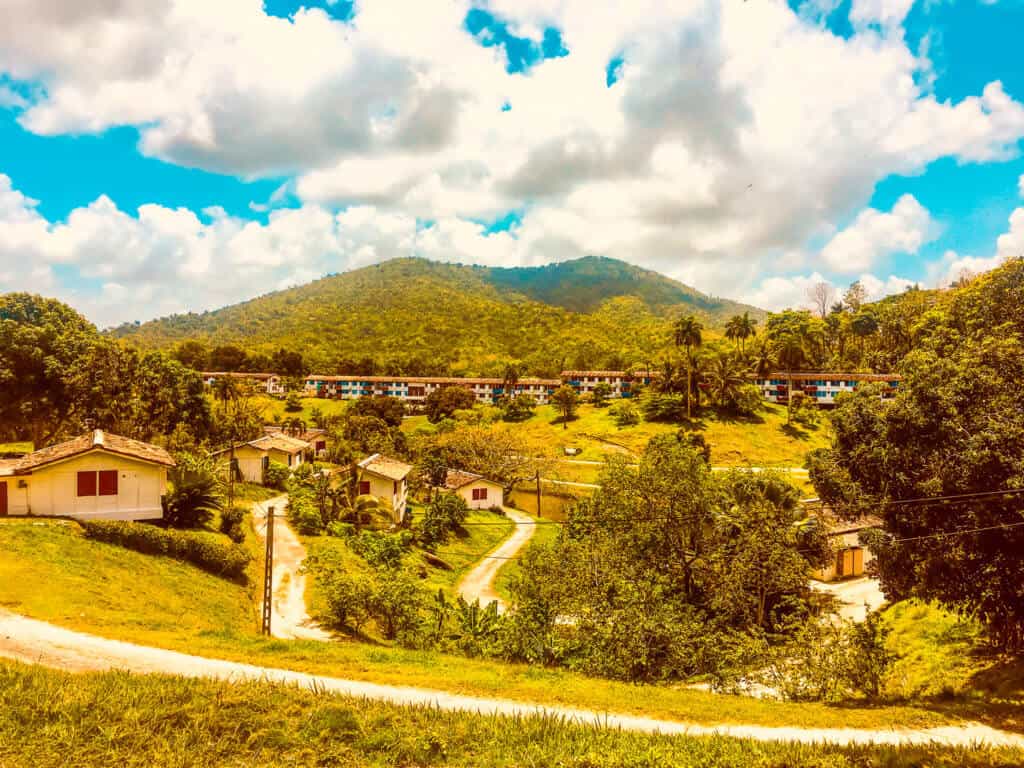
If you like to be a bit more spontaneous with the activities that you choose, it is a good idea to reach out to the owner of your Casa Particular or hotel concierge to get help in booking excursions. Many Cubans who work in the tourist sector are well-connected and more than happy to help you with this.
To keep things organized, I like to use Wanderlog. What’s great about this tool is that it includes both maps and suggested activities, so it makes planning a trip very easy. For more tips, head to my post on How to Plan a Trip.
6 | Planning for Daily Life in Cuba
Money
One important factor to consider when planning for your trip is the currency in Cuba. As an American, you are not able to pull out money from ATMs once you arrive in the country. You are not able to use American credit cards or debit cards for purchases neither. For these reasons, it is necessary to pull out all the money that you’ll need for your entire trip and bring it with you.
My friends and I purchased as much as we could before arriving (e.g., activities), and then set a budget for each day on what to spend. We then tacked on enough for an additional day in case of emergencies. We found that budgeting $100/day was enough, but that amount will vary by how you choose to spend your time in Cuba.
Note, in the past, there were two currencies. The Cuban Peso (CUP) and the Cuban Convertible Peso (CUC). The latter was pegged to the US dollar, and primarily used by tourists. However, in 2021, the CUC was phased out completely. As of summer 2023, $1 ~ 24 CUP. Click here for the latest exchange rate.
The Language
Now of course, the language in Cuba is Spanish. I recommend that you learn at least some basic phrases in order to navigate daily life, as English is not very widely spoken. For a complete listing of basic Spanish phrases, check out my post on Spanish Phrases for Travel.
Planning your Meals
There is a bit of a rumor that there is no good food in Havana. There is plenty of good Cuban food, you just have to do your research! Check out this post to learn more of my tips on where to eat in Havana. In this guide, I provide many tips on which local restaurants to try while there.
Getting Around Havana
Havana is a pretty walkable city, especially if you stay in Old Havana. This is the most tourist-friendly part of the city. If you stay a bit further out, it is relatively easy to find a cab.
We stayed in Central Havana and used the latter option quite often. When hailing taxis, be sure to negotiate the price up front. Most taxis will try to raise the fare a bit if they recognize that you are not local.
RELATED: How to Go from Havana to Varadero
Frequently Asked Questions about Planning a Trip to Cuba
To plan a trip to Cuba, consult the latest travel regulations for both your home country and Cuba, book flights through airlines offering service to Cuba or via third countries if necessary, and secure accommodations and any required visas or tourist cards in advance.
The cost to go to Cuba varies based on factors like flights, accommodations, meals, and activities; travelers from the U.S. might expect to spend anywhere from $1,000 to $4,000 or more per person for a week-long trip, depending on the level of luxury and planned activities.
A trip of 4 to 7 days in Cuba can allow you to see key highlights like Havana, Trinidad, and Varadero, while a longer stay of 10 to 14 days could provide a more in-depth exploration of the country.
The best way to travel to Cuba generally involves booking a direct flight from a country that has established air links with Cuba or connecting through a third country where restrictions may be less stringent; additionally, ensuring compliance with all travel regulations and obtaining any necessary visas or tourist cards is essential.
How to Plan an Independent Trip to Cuba | Final Thoughts
As you can see, there are a lot of things to keep in mind when planning an independent trip to Cuba. But with this post (and the downloadable checklist below), you should not have any trouble!
Plan Cuba Like a pro!
Sign up below and get our Free Guide to planning the Perfect Trip to Cuba!
Cuba is a complex place to plan travel for – to help with this, we’ve created this guide to make sure you don’t forget anything before you go!

The Best Tips for Planning a Trip to Cuba
Here are a few key tips to keep in mind as you prepare for your trip to Cuba:
- Know the Entry Requirements: Travelers to Cuba must understand the entry requirements. They should apply for the appropriate visa or tourist card and keep an eye on the latest regulations that may affect their travel plans.
- Prepare for Currency Needs: Travelers need to carry enough cash since ATMs might be scarce or incompatible with foreign cards. They should convert their money to the Cuban Peso (CUP) upon arrival, as this is the currency used locally.
- Stay Connected Thoughtfully: Internet access in Cuba can be limited, so travelers need to plan accordingly. They should purchase Wi-Fi cards from official outlets and be mindful of where and when they can connect online.
- Explore Local Accommodations: For a more authentic experience, travelers might consider staying in Casas Particulares. These local homestays offer a unique glimpse into Cuban life and can make a trip more memorable.
- Respect Local Customs and Regulations: Travelers must be aware of and adhere to local laws, customs, and regulations. Following rules around photography or understanding local etiquette will help them enjoy a smooth and respectful visit to Cuba.
Cuba has a special place in my heart – I’ve never felt more welcomed by strangers in any other place I’ve visited. I highly encourage you to interact with the locals as much as possible when you visit Cuba. Allot some free time in your schedule just to do this. I’m certain you’ll feel as enchanted as I do with this island if you do.
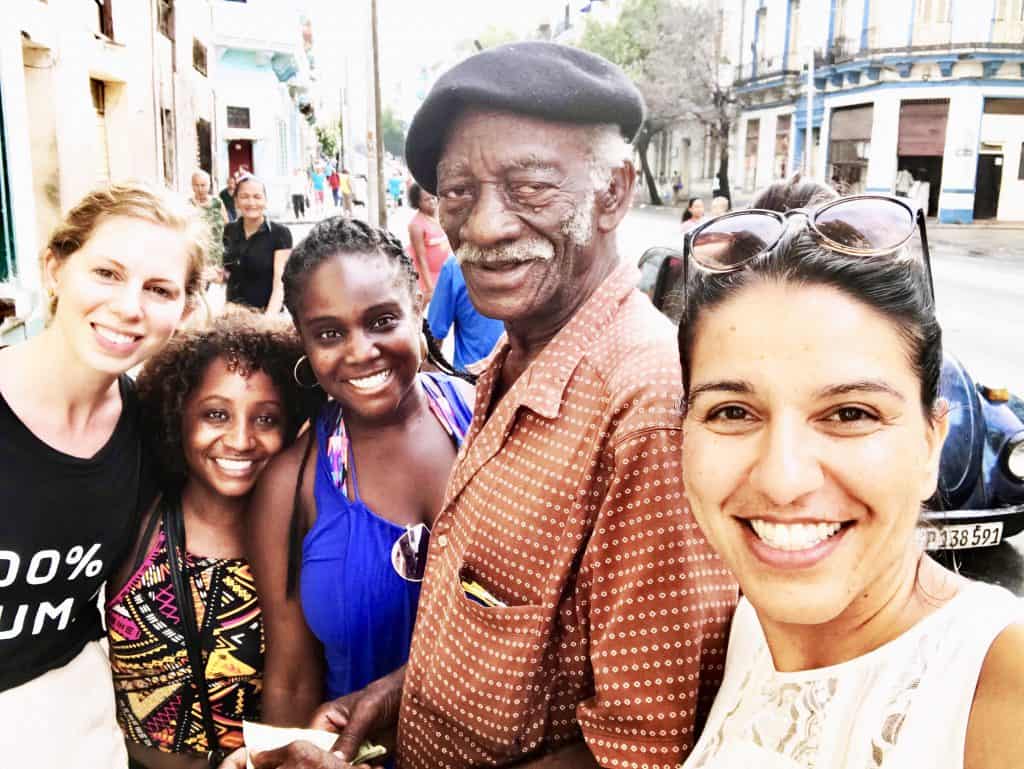
For those of you who have visited Cuba before, what tips do you have? Share them in the comments below!
Related Posts on Cuba:
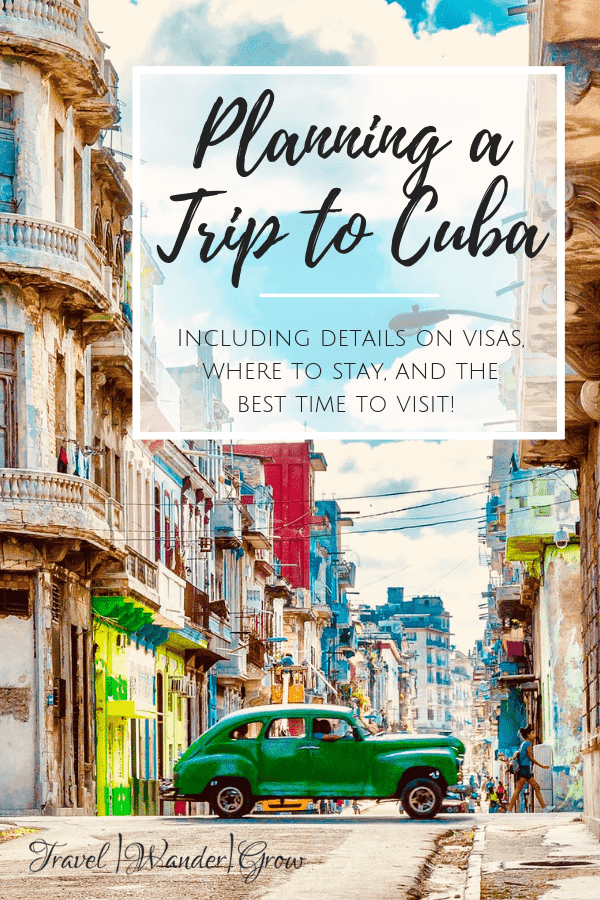

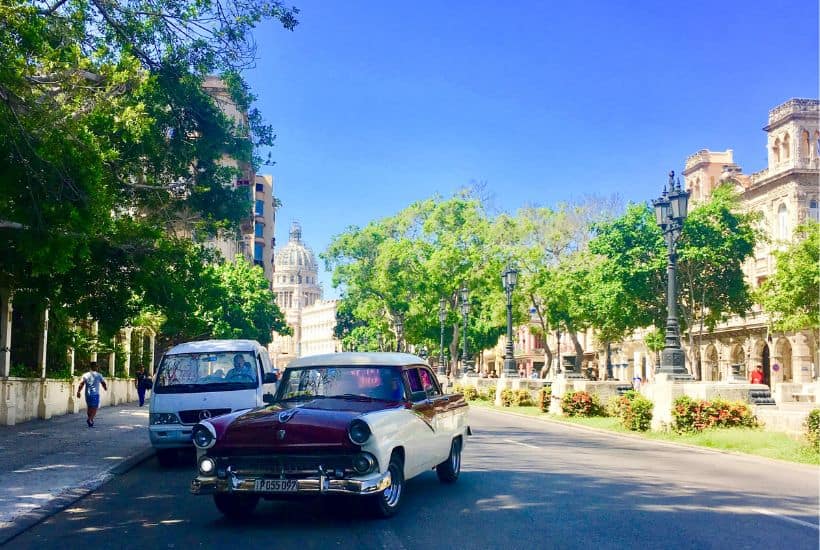
Hey! Awesome website and very informative post. What would be an ideal amount of days to cover most important tourism spots in Cuba? Thank you!
Hi Tasha! I think the ideal amount of days for just Havana is 4-5, depending on how you like to pace yourself. There are lots of activities to do in the city, and I’ll be uploading a post just on this soon!
I appreciate you bringing up Cuba as a vacation destination. I will have to give this more thought as I was unaware that we could travel there.
Why can’t you withdraw money out of an ATM there? What happens if you have an emergency or get your money stolen? Surly there has to be a solution to major problems.
Hi Rick – Glad to hear you’re considering Cuba as a travel destination! In regards to the money situation there, there are only a few workarounds: you either have to have a bank card from a non-US bank or you may use a credit card from one Florida-based bank called Stonegate for purchases there. You are absolutely right that it could be a major problem, so careful planning is so key when preparing to go to there.
Hi,
Fellow travel blogger here. Nice to meet you 🙂 Great post, Cuba is on my radar, but it’s so expensive to travel within the Caribbean. So hopefully i make it there a little later in the year. I also hope that we can work together one day 🙂
Thanks for sharing.
Hi there! I have a bit of good news for you – Cuba is relatively cheap compared to the rest of the Carribean when it comes to prices for flights and the cost of your stay :). I hope you get to visit soon too – it’s one of my favorites! And yes, it’s always great to meet a fellow travel blogger – I’d love to collaborate one day!
Great post…Really like the pictures of Cuba…It gives me a feel for what the country is like. Anyway, after reading some of your posts, really thinking about planning a visit…
That’s great to hear! Let me know if you have questions once you start planning :).